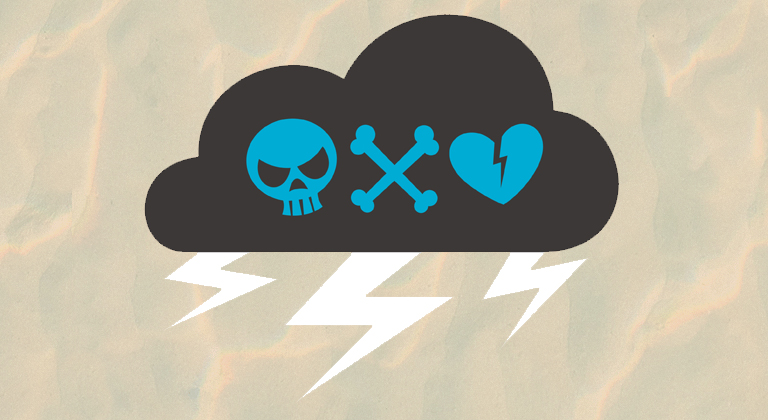A Template for Your Book Launch
Most established authors have their own strategy for book launch that they swear by, but while there are probably a lot of similarities, it’s likely there are just as many differences between them as well. That’s because every author and book is different, and what works for some may fail for others. As with so many things, you have to test and try different things to find what works best for you, but that doesn’t mean it isn’t helpful to have a starting point.
This week, Ginger is sharing his own template for launching a book in the hopes that it can help both authors that are starting out, or more established authors that might be looking to try something new. Even if it’s not an exact fit for your own launch, hopefully it will at least be enough to point you towards the path to success.
The other day, somebody who reads my blogs reached out to me on Instagram with this message:
“You write a lot about ‘launching’ books. What exactly does that mean, and how do you do it?”
That made me realize that there are a lot of different authors who read what I write, and not everybody is at the same stage in their self-publishing journey. Like a lot of authors who’ve reached some level of success, I’ve started to take my experience for granted – and explaining a lot of what I mention dismissively might actually have value for some readers.
For example, the whole idea behind ‘launching’ a book. What does that mean? What’s the benefit? And why should you bother doing a ‘launch’ in the first place?
Well, there are a lot of different approached to ‘launching’ your book, and I can only speak from my experience about how to approach it – but I think most other authors would agree that my approach is fairly solid.
One caveat though – this strategy is optimized for Amazon book launches, as that’s where I sell most of my books. Other online book retailers work differently, and so your launches on those may need to differ. If you are selling your books wide, you should have a listen to the 3 podcasts we did with Erin Wright (episode 10, episode 15 and episode 21), as she discusses a lot of the strategies and promotional options that work best for launching and selling your books on the other storefronts.
What does ‘Launching a book’ mean?
The first time you clicked ‘publish’ in the Kindle Direct Publishing dashboard, you probably got chills. I know I did – and, in fact, I still do. It’s quite an achievement to put something publishable together; and even more to work up the courage to share it with the world.
But simply publishing your book isn’t ‘launching’ it – or, at least, it won’t be launching it very far. As you progress in your self-publishing career, you’ll start to realize that the moment you publish your book is the best time to try and make an impact with it. That’s because Amazon’s entire algorithm is working in your favor when you first publish a book – and successful authors ride that wave for as long as they possibly can.
So, by ‘launching a book’ I’m referring to all of the promotion and marketing you do leading up to the publication of your book, and during the first few weeks of its release. The greater the buzz you get during your book’s first days on the digital bookshelves, the more profitable and sustainable your book will be.
What’s the benefit?
Amazon’s algorithms are always tuned to provide the best buyer experience, and for a lot of buyers that means anything new and shiny. When you first publish your book, Amazon breathes in that ‘new car smell’ and puts your book ahead of many others in its search and display protocols.
When your book appears on Amazon through organic visibility or paid advertising, it will also have a foxy little “New Release” flair at the top of it – and in my experience, that flair doubles my conversion rates, because potential readers often consider anything with flair to be good.
For six weeks or so, your book will also get preferential placement on the ribbon of organic suggestions that used to be called “Also Boughts” but now might show up as “Explore Similar Items.” If you manage to get a lot of downloads during your first few days of release, this can have a significant impact on the longevity of your sales.
But perhaps most importantly, making an impact during your first few weeks of release makes it much easier to Rank your book in Amazon’s Top 100 charts – which can increase your visibility massively, and lead to an influx of new sales (which, in turn, rank your book even higher.)
So, in terms of return on investment, a strong launch will almost always outperform even effective advertising. When you’re advertising an existing book, you can only ever work with the metric of Money Spent < Royalties Earned. When you launch effectively, you can find organic momentum making your book perform so much better and often with a fraction of the advertising spend; which will in turn make the advertising you are doing so much more effective.
Not to mention, the launch of a new book is always the best way to advertise your old books. Whenever I launch a new novel in my Motorcycle Romance series, I always find sales of the new book being matched by sales of the first book in the series – perhaps because people who like the look of the new book, but haven’t read any of the previous ones will want to start at the beginning of the series. That means the subsequent read-through of my other books will earn me much higher royalties than they would have done on a regular non-release month.
How do you do it?
Ask a hundred different authors how they launch their books and you’ll get a hundred different answers. However, they all operate on the same theory, and authors just wind up leaning more heavily into whichever tactics work best for them.
What I’m going to outline now is what I consider to be a solid launch strategy – but I certainly don’t claim that it’s the best, and your mileage may vary with it.
And when I said “your mileage may vary” it’s not to suggest there’s a flaw in this strategy. It’s just so dependent on your book. That’s perhaps the first thing to know about launching a book:
It all depends on your book.
If your book has a strong concept, is tightly packaged with an appropriate cover and a catchy blurb – and you target the right potential readers – you could have a best-seller on your hands. I’m not exaggerating: I went from earning $50 a day to $500 a day when I published my first bestseller, and that was practically overnight.
But if your book isn’t quite so polished, the impact it has will be significantly less – and having launched 30 books in the last few years, I know this from bitter experience. Everything has to be just perfect – like an archer pulling back the string of her bow knowing that she’ll only get one chance to hit the bullseye.
Successful authors tend to be the ones who figured out how to write and self-publish books that perform consistently, and then they just keep writing them. That’s a solid strategy, but the learning curve is steep. I’d written 11 books before I published my first best-seller, and often the only valuable thing I got out of doing so was seeing each book perform just a little bit better until finally I figured it all out.
So, a month before you even click ‘publish’, make sure you’re researching other books on Amazon – the ones you want your book to be displayed alongside. Figure out which categories they’re in, and what conventions seem to be the most popular. Everything in the Top 100 of your category serves as a clue – right down to being able to predict which books will succeed based on their typefaces and cover colors.
Getting this right is the real deal-breaker in your book launch, so make sure your book is the best you can possibly make it before you commit to clicking ‘Publish.’
Priming the pump.
I normally start my launch preparations two or three weeks before I plan to click ‘Publish’ on Amazon, and that’s because I want to make sure everything is ready for that vital first week on the digital bookshelves.
Getting Reviews
Primarily, this involves soliciting reviews. Reviews are a massive part of having a successful book launch, since people totally buy into the ‘social proof’ of other people praising this book. The top-performing self-published authors have a thousand or more readers on their Advanced Reader Copy lists, which means they’ll often get hundreds of reviews in the first week of each book’s release. The impact this has on their Rank is huge.
For the rest of us, though, we have to make do where we can. If you’ve been publishing for a while, you might have enough newsletter subscribers to start an ARC group of your own. If not, services like Hidden Gems exist to help you get honest reviews for your book. It’s not an easy process, especially since Amazon has become pretty aggressive in policing who can post reviews, but getting genuine reviews could potentially make or break your launch.
Personally, I email my ARC team about two weeks before the day I plan to publish my book and offer them a digital Advanced Reader Copy, asking them politely (since you can’t demand anybody review your book) to post a review as soon as the book goes live.
When I finally do publish the book, I’ll email all the reviewers who downloaded a copy and let them know the book is live. Over the course of the next week, you’ll start seeing their reviews pop up on your book’s Amazon Product Page.
And while hundreds of reviews is every author’s dream, it realistically only takes about 30 positive reviews to provide potential readers with the ‘social proof’ they need to take a chance on your book. They don’t even need to be 5-star reviews. In fact, readers often trust a book more if there are a few more critical reviews.
In any event, this is one of the cornerstones of a successful launch.
Booking Promotions
The second tactic I rely on is to promote my book through third-party newsletter services during the first week of its release. There are lots of different newsletters that authors have found success with, and I’ve written a whole blog about which ones have worked for me. You’ll often have to book your spot weeks or possibly even months in advance, which is why this is a step to take long before you click publish.
Newsletters are far from your only option in terms of promoting the launch of your book – they just happen to be the tactic I rely on the most. I’ve experimented with Facebook advertising during launch-week and had some pretty spectacular success with it, but I’ve still always found the return on investment from a successful newsletter promotion to be far higher.
At this stage, though, you’ll have to decide on whether you want to launch your book with a free or paid promotion. What does that mean, exactly? Well, if you’re part of KDP Select you can launch your book using a 5-day Free Promotion deal and give away hundreds of copies. Alternatively, you could launch at full price, or a discounted rate (most commonly $0.99.) There are newsletter promotions available for most books at most prices, but you’ll have to decide on your strategy at this stage in the process.
I used to rely heavily on launching my books in KDP Select with a 5-day Free Promotion, but since Amazon started shrinking their organic suggestions in favor of paid advertising, I’ve found this strategy to be far less effective than it was. That’s why I have tried launching my book at 99c and targeting promotions at that price point instead.
Why? Well, my theory is that Amazon views all sales equally, so selling a book at $0.99 bumps you up in Rank just as effectively as selling a book at $4.99 – which means volume of sales is often more important during the first few weeks of publication than the royalties you earn from them. In my experience, you’ll always get more sales when your book is priced at $0.99.
That being said, you’re taking a gamble by doing this. A sale at $0.99 nets you $0.33 in royalties – which means you’d need to sell ten books to make as much money as you would selling a book at $2.99. For an author in KDP Select, that loss of revenue will often be compensated by KENP Page Reads, but if you’re a widely-published author, there’s probably more profit to be made by launching at full price (as Erin Wright from the Facebook group Wide for the Win always recommends: “Bank before Rank.”)
So, that’s why I can only tell you that this is my strategy for when I launch a book. It’s probably not the best and definitely not the only template, so you’ll have to decide what will work best for you.
Launch Week
I’ve come to the conclusion that Amazon gives your book that “new car smell” for between four to six weeks following publication. However, I always plan my launch promotions to kick in a week after my initial publication date. This is because I like to try and get my ARC team to post as many reviews as possible in that first week.
That means the second week following the initial publication of my book is when my newsletter promotions will kick in. Each day my book is going to be promoted to the subscribers of each newsletter, and that will generate a substantial number of sales.
On the first day, for example, I might schedule the newsletter promotion from My Romance Reads, which specializes in promoting romance novels like mine. This is generally the day I also announce the launch of my book to my newsletter subscribers – the ones who aren’t part of my ARC group, at least. They’ll also provide a boost to sales. In combination, that’s a fairly strong start which might even get my book ranking into the Top 100 of some of the less competitive categories my book is listed in (although won’t make much of a dent in the broader Romance category.)
On the second day, I’ll generally have scheduled other promotions – perhaps in the Bargain Booksy newsletter, and Pillow Talk Books or another smaller newsletter. These won’t have the same impact as the first day promotions, but they should continue the stream of sales which is what the Amazon algorithm really likes.
If you’re into blog tours, or plan to run Facebook ads for your new book, this is when and how to schedule those, too. You don’t want to shoot your bolt on the first day of your launch. You want to stretch the promotions out over a few days to show Amazon not just that people want to buy your book, but they keep wanting to buy your book.
That’s what it takes to really get your book in the Ranks – and the higher you chart in your chosen categories, the more visible your book will be to new potential readers. If you can chart in the Top 100 of any categories you’ll see the impact first hand.
Then what?
No good thing lasts forever, though – and sooner or later your promotions will end. There’ll be a point at which your newly launched book peaks in the rankings – and then faces an inevitable decline.
This is normally the point at which I switch my book from $0.99 to its regular price of $4.99. That will instantly accelerate its decline in the rankings (because you’ll inevitably sell fewer full-priced books than you will at the deeply discounted rate of $0.99.) However, given that each sale generates ten times as much in royalties, that’s a sacrifice worth making.
From that point, my traditional advertising strategy will kick in – and if I’m lucky, that will help keep my book clinging to the ranks even after all my promotions have ended. With the book back at full price, my metric for success will be to earn more in book sales than I spend in advertising; and the real profit is made by bridging the gap between earning rank and earning profit.
And for you? The author? Your job is now to turn your attention to publishing and launching your next book.
Your Mileage May Vary
So, that’s how I launch my books – or, at least, how I launch them right now. Truth be told, though, my current process for launching my books has only been reached through a lot of trial and error, and I’m always considering something new each time I publish my next book. This is also what works for me – and perhaps only me.
I know Erin Wright from Wide for the Win would roll her eyes at my strategy (she recommends never launching in KDP Select) but I can only speak to what works from my experiences, even if she clearly has a system that works very well based on hers.
So what’s the value in sharing this template, if it’s not what every author uses? Well, it’s exactly that – a template – and every author has to start somewhere. Having any kind of strategy in place will provide better results than just ‘winging it’ and if there are authors out there who’ve never ‘launched’ a book before (or even those unhappy with previous launches and looking to try something new), this might be a suitable starting point.
But from there, the journey is theirs and theirs alone. The goal is to launch your book once, then try again, and then try again and see how you can do it better each time. Whether you lean more on blog tours or advertising, or launch at full price as opposed to $0.99, the only way you can figure out which works best for your readers is to try it!
So, take this template and get started – but just remember what I said at the very beginning of this blog post: It all depends on your book. I’ve used a launch strategy similar to this to launch a book into the Top 100 of Amazon for five whole weeks, but it’s also barely moved the needle on other books I’ve published. At the end of the day, your launch strategy will never compensate for a book that doesn’t appeal to readers; so you’ve got to do your category and genre research thoroughly before you click ‘publish.’
But I think there is value to the template I’ve outlined – if for no other reason than it being a manageable and affordable approach to launching a book. Newsletter promotions run from $10 to $1000+, but that still buys you a lot of promotion for your money; arguably more than relying purely on Facebook or Amazon advertising. The downside is that you can only really ‘launch’ a book one time – but if you do it right, I still believe once can be enough to get some momentum going with your self-publishing career.
And that’s really the goal here. Nobody ‘launches’ a self-published book to the stratosphere first time out (or, at least, it’s highly unlikely they will.) However, each launch builds momentum for the next one – until you’re launching books that reliably hit the best-seller charts in your category of choice.












1 Comments